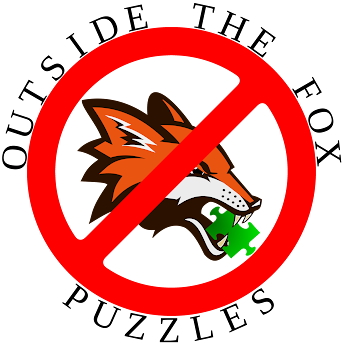If a puzzle includes no instructions and a number at the end of its title, it possibly belongs here. If a puzzle includes no instructions and doesn't have a number at the end of its title, it's often a Mystery Hunt-style puzzle where figuring out the instructions is the meat of the puzzle.
Anacrossword
Solve the crossword using the clues provided. When the letters in the numbered squares are transferred to the same-numbered blanks, you will reveal a clue to the final answer. Work back and forth between the blanks and the crossword to finish the puzzle. In the hard versions, the clues are listed alphabetically by their answers; you must determine where each answer belongs. Additionally, spaces and punctuation are not provided for the final clue. In the easy versions, the location for each answer is given, as are spaces and punctuation for the final clue.
Crypticrostic
Solve the cryptic crossword-style clues; numerous guides to cryptic crosswords exist online, including this one from the National Puzzlers' League. Transfer the letters from the numbered blanks to the same-numbered blanks at the top to form one final cryptic clue whose answer you seek. In the hard version, spaces and punctuation are not provided for the final clue, and the other clues are listed alphabetically by the clue itself so as to provide no assistance to the solver. In the easy version, spaces and punctuation are provided for the final clue, and the other clues are listed alphabetically by the answer. Additionally, the type(s) of wordplay in each clue, including the final one, is shown as a solving aid. (A peculiar convention of my easy Crypticrostics, initially born out of ignorance, but now kept in play for the sake of internal consistency, is that what the NPL guide calls "deletions" are split into two separate types of wordplay, referred to as "deletion" and "subtraction". A "deletion" involves removing letters from a specified position in a word, such as the first, central, or last letter; a "subtraction" involves removing specified letters, such as the letter A or T or even a string.)
Divided Into Columns
A fusion of anacrostic puzzles (minus the crostic) and dropquotes. Solve the provided clues, transferring the letters from the numbered blanks to the same-numbered squares in the grid at the top. As a solving aid, the clues are listed alphabetically by their answers, and the letters are also alphabetized within each column. Then figured out the correct order to place the letters in each column in the white squares below to spell a clue to the final answer. Black squares (and nothing else) indicate the end of a word; a word can wrap from the right end of one line to the left end of the next. In accordance with dropquote conventions, capitalization and punctuation aren't show except for hyphens. In the easy version, the top set of squares in the dropquote grid is removed, and the squares in the final clue are directly numbered.
DIV IDE DIN TOT RIP LES
A fusion of anacrostic puzzles (minus the crostic) and a puzzle the National Puzzlers' League calls "anaquotes". Solve the provided clues, transferring the letters from the numbered blanks to the same-numbered blanks in the middle of the puzzle, which are grouped into threes. As a solving aid, the clues are listed alphabetically by their answers, and the trios of letters are also alphabetized. Then figured out the correct order to place the trios of letters in the top set of blanks to spell a clue to the final answer. Carets (^) are shown below the blanks to delineate the groups of three as a solving aid. In accordance with NPL conventions, an asterisk (*) to the left of a blank indicates a letter that is capitalized all the time due to its use in a proper noun or adjective, and a caret (^) to the left of a blank indicates a letter that is capitalized due to its use in a title. For example, ^Sir *Isaac *Newton's favorite film is "^Gravity". In the easy version, the middle set of blanks is removed, and the blanks in the final clue are directly numbered.


